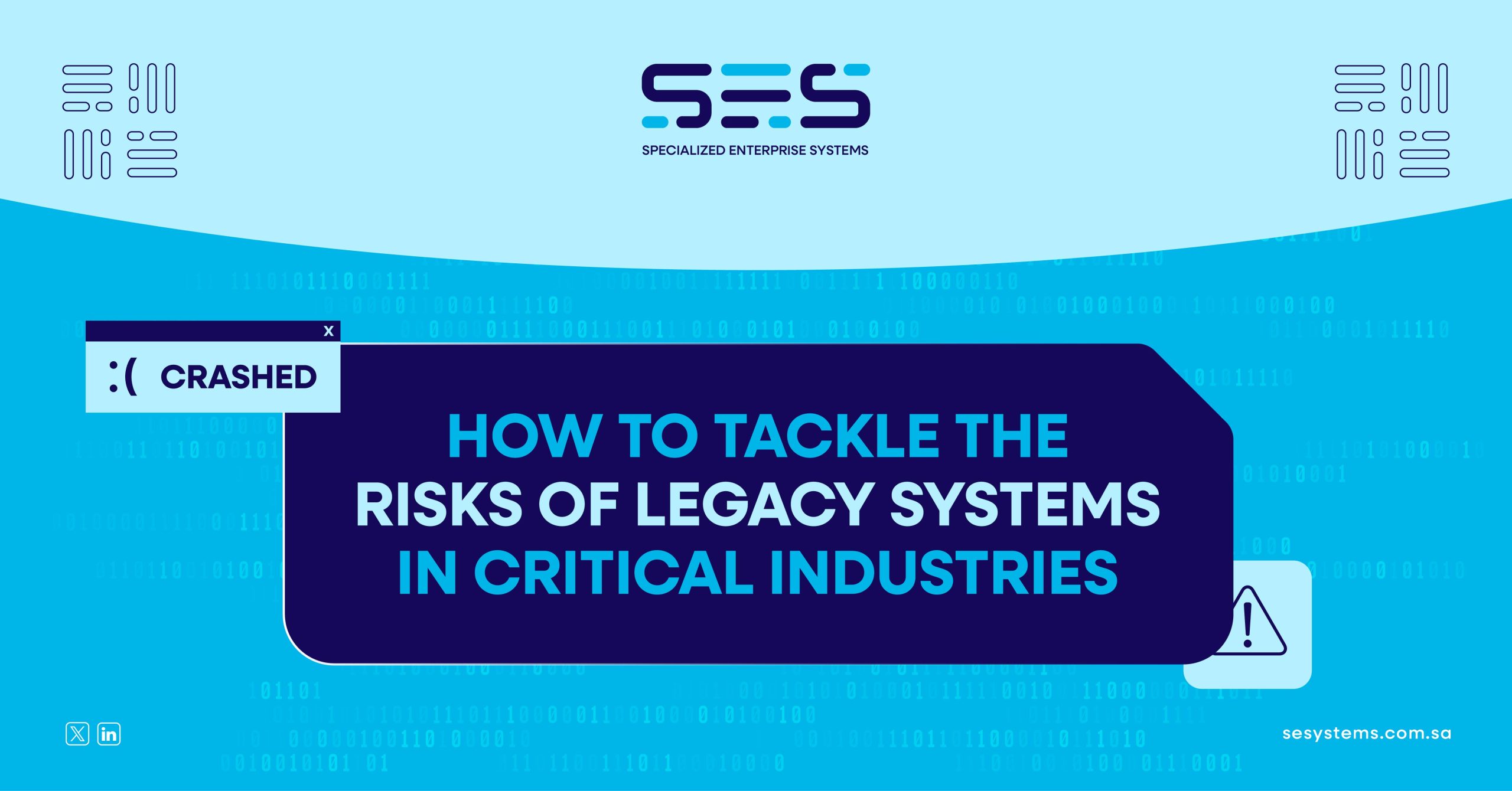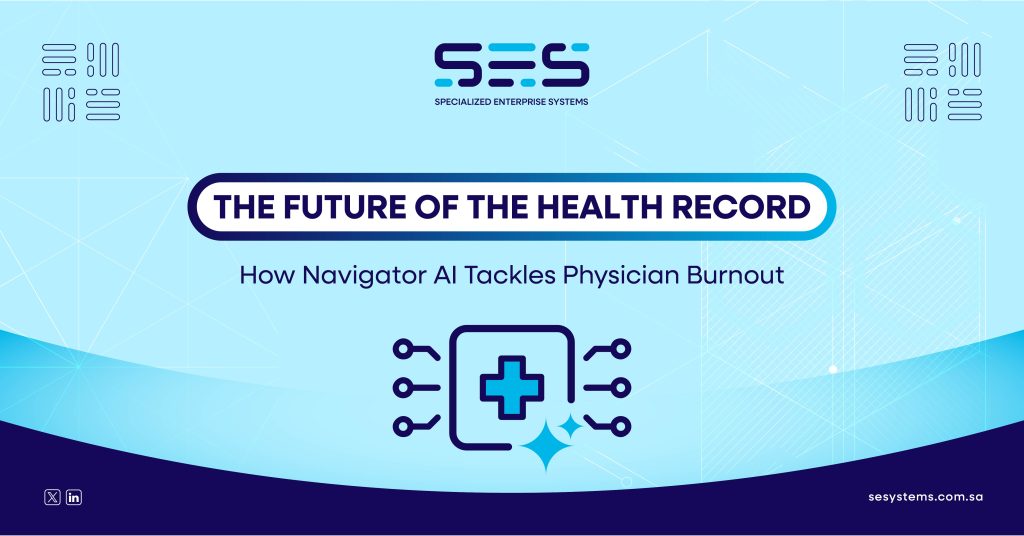Saudi Arabia is executing one of the most ambitious national transformations in the world. But success depends on overcoming a major challenge: the systemic liability from legacy IT systems across the Kingdom.
A staggering 66 percent of Saudi organizations say flaws in their core enterprise IT systems disrupt business-as-usual every single week.
The False Economy of Delaying Upgrades
Delaying modernization doesn’t reduce costs. Research shows that extending the life of old platforms carries a higher Total Cost of Ownership (TCO) than investing in transformation; every day spent maintaining an outdated system is a day where productivity is drained and innovation is stalled.
So how much are delays really costing businesses? Maintenance alone can consume up to 40% of an organization’s IT budget. Beyond the visible costs, a majority of businesses — 56% — report a significant negative impact on revenue directly because of technology downtime caused by rigid, aging infrastructure.
If a cyber incident hits these vulnerable legacy systems, the cost skyrockets: the average data breach in Saudi Arabia ranges from SAR 1.2 million to SAR 4 million (though estimates can vary widely). Modernization isn’t about saving money next quarter; it’s about ensuring long-term profitability and resilience.
The Modernization Blueprint: Decoupling for Speed
The good news is that organizations don’t need to ‘rip and replace’ every system overnight. The most sustainable strategy is a phased, hybrid approach that minimizes disruption while bridging the gap between old and new. This blueprint for successful transition rests on three pillars:
1. Technical Strategy: Layering AI and Microservices
The core technical upgrade uses APIs and Microservices to create a secure decoupling layer between your reliable (but rigid) legacy core and modern, agile platforms. This innovative strategy allows enterprises to “layer AI instead of rebuilding,” quickly delivering new digital features and strengthening security without the pain of a full core overhaul.
This technological leap is essential for capitalizing on the Kingdom’s massive infrastructure push, including the National Data Center Strategy, which aims to build up to 1.5 gigawatts of data center capacity by 2030.
2. Governance Strategy: Enforcing Accountability
In a national transformation, technology decisions are ultimately governance decisions. The Cloud First Policy(MCIT/DGA) must be strictly enforced, mandating that government entities prioritize cloud solutions like Deem Cloud.
The regulators aren’t waiting. SAMA demands adherence to its IT Governance Framework for stability, and the NCA sets mandatory technical security baselines through its Essential Cybersecurity Controls (ECC).
3. Compliance Solution: Sovereign Cloud for Safety
To address the immediate pressure from regulators, organizations must shift to Sovereign Cloud solutions. These platforms are purpose-built to guarantee data residency and adhere to the rigorous standards set by SAMA and the NCA.
With the Personal Data Protection Law (PDPL) demanding strict technical measures for data preservation — and its grace period having ended on September 14, 2024 — this shift is critical. Non-compliance is expensive: NCA fines can reach up to SAR 25,000,000, and PDPL violations can cost up to SAR 5 million .
Sectoral Urgency: Where the Stakes are Highest
The need for modernization varies by sector, but the consequences of inaction are universally severe:
- Oil & Gas (OT/Critical Infrastructure): This sector is under constant attack, with 90% of the world’s largest energy companies experiencing cybersecurity breaches in 2023. Many operational technology (OT) systems are legacy, unpatched, and exposed.
The convergence of IT and OT creates a direct attack vector. The only defense is urgent modernization of control systems, a mission underscored by the creation of the OT Cybersecurity Center of Excellence (OTC-CoE). - Entertainment & Hospitality: Saudi Arabia is targeting 150 million annual visitors by 2030. This hyper-growth requires systems with massive digital scalability. Old ICT guarantees poor customer experience and operational bottlenecks, damaging the Kingdom’s international reputation as a competitive global tourism market.
- Healthcare: Here, legacy technology puts patient safety at risk. Outdated Electronic Health Records (EHRs) are difficult to use and less likely to catch errors, including potentially fatal medication errors. Incomplete or hard-to-access patient data also burdens patients and compromises an organization’s quality scores.
- Education: This sector, tasked with training 10,000 AI professionals by 2026, often faces complex technical integration roadblocks and internal organizational resistance when adopting new IT. This limits the creation of the skilled talent pool needed for national transformation.
Mastering the Human Element
The toughest roadblock may not be the technology, but the people responsible for it. Internal resistance often stems from staff fearing the unknown or simply feeling comfortable with old, inefficient systems.
To address this challenge, technical investment must be paired with aggressive change management strategies that fit the Saudi context. Leadership, when aligned with culturally appropriate practices, significantly boosts employee engagement and performance. This means transparent communication, encouraging employee participation, and investing heavily in targeted training and leadership development programs.
By viewing technology modernization as a governance, financial, and cultural program — not just an IT project — the Kingdom’s enterprises can rapidly mitigate systemic risk and secure their place at the forefront of the global digital economy. SES can help you. Contact us for a consultation.










